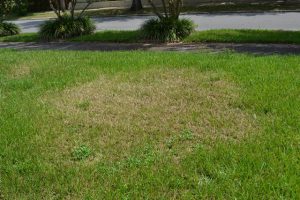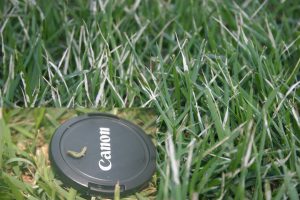Homeowners with St. Augustinegrass and Zoysiagrass are starting to see tiny tan moths erratically flying over the lawn. These moths will rest in turf and other groundcovers and fly up when disturbed. They are not strong flyers so they tend to come to rest in plant material short distances away.
The adult female moths will lay small cluster of eggs on the grass blades at night. About a week later, larvae emerge and begin feeding on grass blades in the evening. On St. Augustinegrass, there will often be notches along the edges of the blades.

In zoysiagrass, there is a surface blade feeding which makes turf blades look whitish.

Damage often occurs in localized spots and then can spread out depending on the intensity of the infestation. In many lawns, areas look a little ragged and may appear shorter than surrounding grass Since turf is actively growing at this time of year, it can often regrow after feeding damage.
If you have a more serious issue that is resulting in thinning areas, you may need to make an insecticide application. Consider a least toxic approach like B.t. or spinosad or apply a more broad spectrum lawn insecticide as a spot treatment. Make your application in the early evening and follow label directions for applying water. Be patient and remember that grass often has time to recover from damage during late summer and early fall.
 1
1
